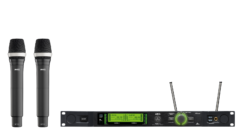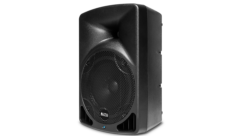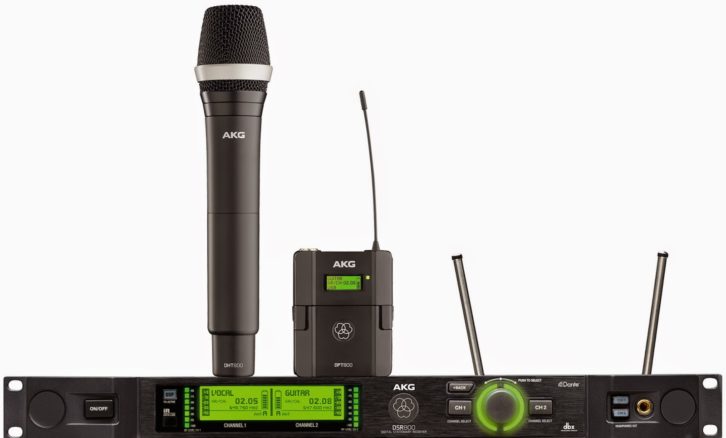
Though pressure on the RF spectrum continues to be a big consideration when selecting a microphone setup to meet the specific needs of an installation, the demand for wireless hasn’t let up. So when wireless is where you’re headed, manufacturers are still bringing out systems to provide reliable performance, excellent audio quality, and scalability, all while trying to deal with the challenges of the spectrum.

AKG’s DMS800 Reference Digital Wireless Microphone System features 512-bit encryption and a 150MHz frequency range for worldwide touring flexibility. It offers both Dante and AES/EBU digital audio outputs, and the DHT800 handheld transmitter’s microphone heads are exchangeable. Additionally, the mute switch of the transmitter may be set to work as a power switch. The DMS800 can be outfitted with the AKG D5 WL1, D7 WL1, or C5 WL1. Further, the DMS800’s optional network remote control allows frequency coordination and monitoring of multichannel systems by PC software Audio Architect, Apple iPhone/iPad/iPod, or Soundcraft Vi consoles.
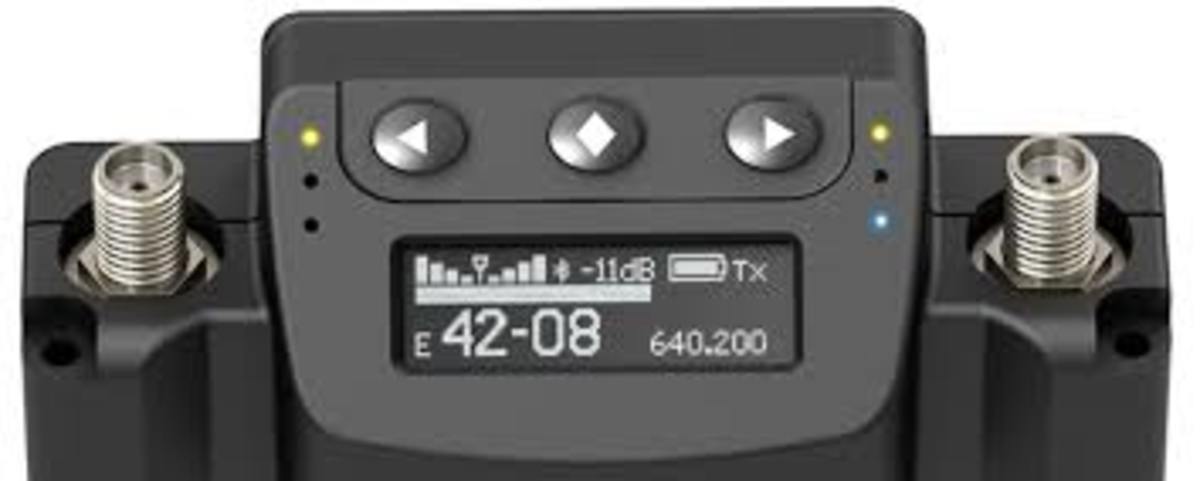
The Audio Ltd. 1010 digital wireless microphone system features 100 MHz of switching bandwidth. Encased in a black anodized chassis machined from high-grade aluminum, the TX1010 transmitter distinctively features rounded corners and recessed buttons. Up to 20 systems can be operated together in one TV channel thanks to a proprietary modulation system allowing high channel density. Features include an end-to-end delay of 2mS, crystal-clear OLED menu on both the transmitter and receiver with select-and-click displays for streamlined operation, and much more. Audio Ltd. offers a free downloadable app allowing main function via smart device.
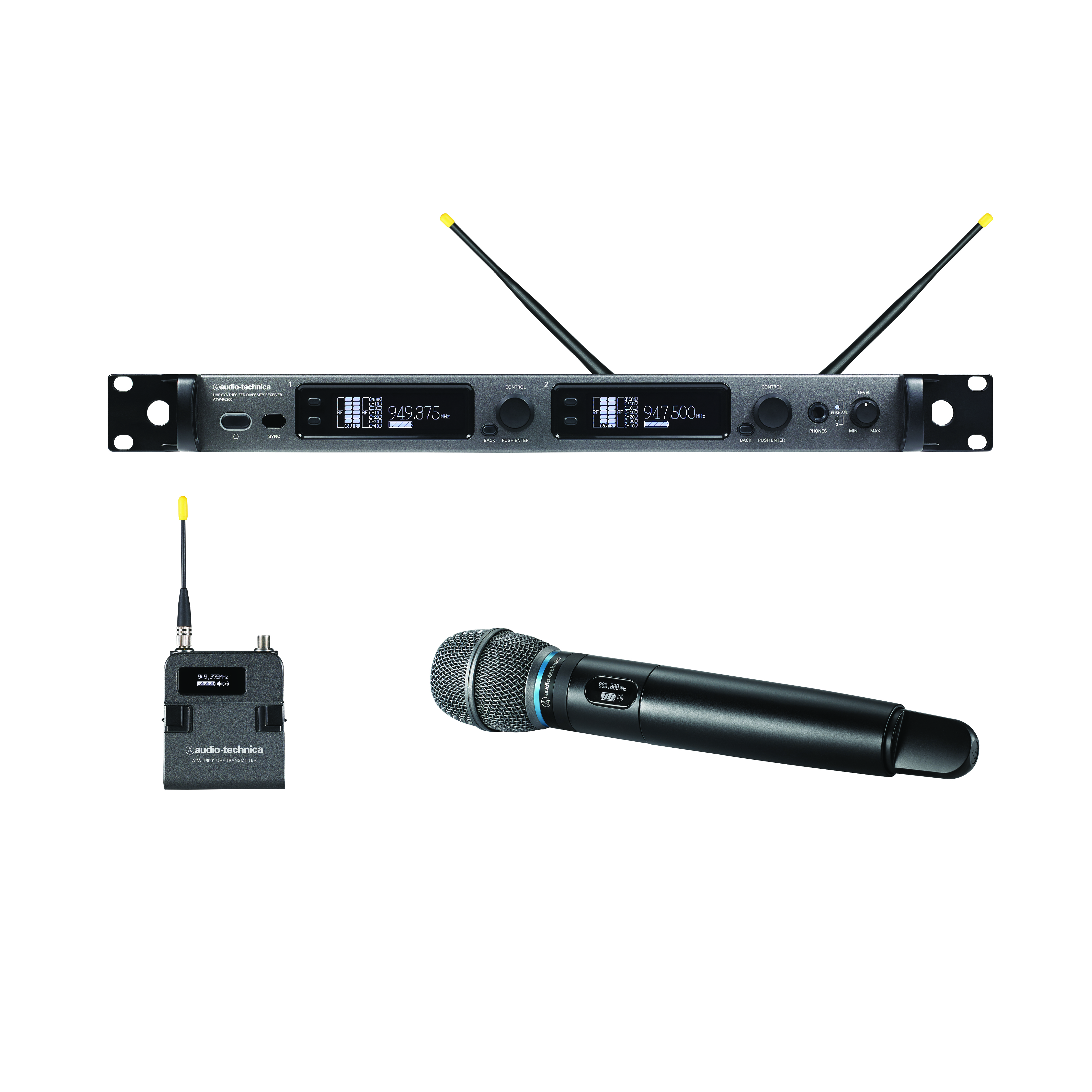
Audio-Technica’s 6000 Series high density wireless system operates in the 944-952 MHz band, keeping it free from broadcast TV interference. The system uses IMD suppression methods to enable its channels to be spaced at 125 kHz intervals, allowing up to 31 simultaneous channels within 4 MHz of bandwidth. The system’s ATW-R6200S receiver provides two channels per rack space, and its displays and front-panel controls make it easy to configure the system and monitor frequency, RF and AF levels, transmitter battery level, mute status, and more. The receiver has a 3-pin XLRM balanced output and 6.3mm (1/4in.) balanced output for each channel, and a front-panel 6.3mm (1/4in.) headphone jack with volume control that can be switched to monitor either channel. Two channel-specific Ethernet ports allow receivers to be connected to a hub or router with a DHCP server and, by extension, to a PC. Using A-T’s Wireless System Monitor software, the connected receivers may by monitored and configured on the PC. Two transmitters are available for use with the 6000 Series: ATW-T6001S body-pack transmitter and ATW-T6002xS handheld transmitter.

The Audix Performance Series of wireless products is divided into two groups: the 40 Series and the 60 Series, both of which are available in single and dual rack models. Common system features include one-touch auto scan searches; one-touch sync links transmitter to receiver via infrared beam; RF and AF indicators; high-contrast LCD displays; simplified, intuitive menus and a metal chassis; soft keys to control output levels, squelch, pilot, and lockout; choice of XLR or quarter-inch outputs; and a wide selection of handheld, instrument, headworn, and lavalier microphone options. The R42 is a two-channel diversity receiver including antennas, power supply, rack mount, and BNC cables for front mounting antennas. By adding the ADS48 antenna distribution system, a total of four R42 systems (eight channels of wireless) will fit into five rack spaces, operable from one antenna set.
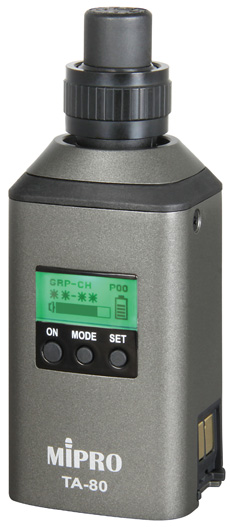
Avlex has introduced the MIPRO TA-80 digital plug-on transmitter, a digital wide-band wireless plug-on transmitter designed for secure, clear, interference-free communication. Equipped with a balanced XLR mic input jack, the TA-80 is designed for a wide range of applications, including use with measurement microphones, condenser/dynamic wired microphones, recording microphones, and musical instrument microphones. The unit is compatible with all MIPRO ACT-8 Series receivers. The TA-80 has 8 gain levels and offers selectable 12 V or 48 V (at 10 mA maximum) Phantom Power, which can be switched off for use with dynamic microphones, and has a flat and wide 20 Hz ~ 20 kHz frequency response, ultra-low THD and noise floor, fast transient response, strong anti-interference capability, and a high S/N ratio.
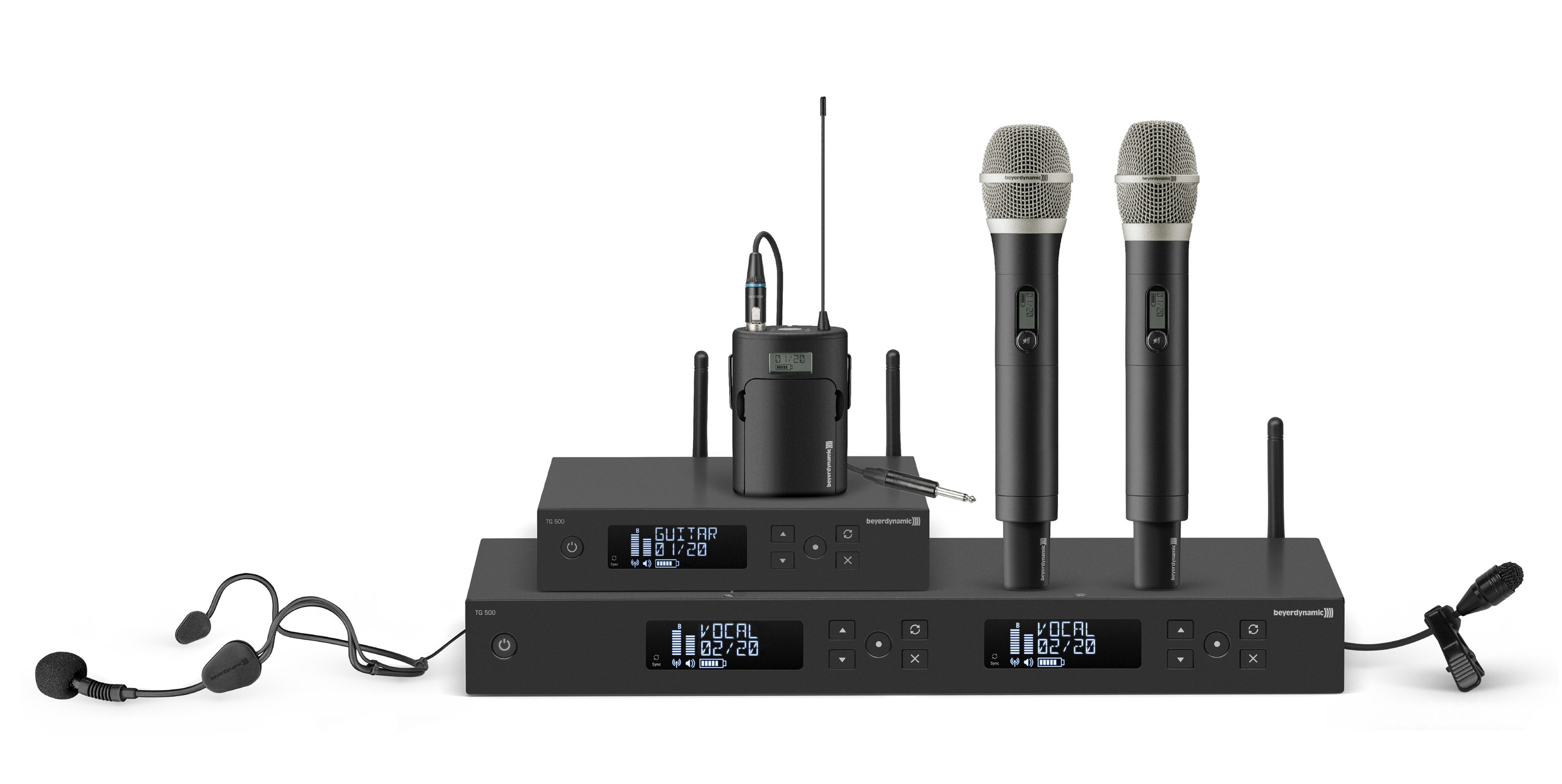
The beyerdynamic TG 500 is a versatile wireless system that combines intuitive operating elements with a backlit LCD display packed with status information (HF/NF level, battery level, transmission frequency, name), making menu navigation user-friendly. The frequency response of the system ranges from 45 to 15 kHz. A balanced XLR output and a balanced jack for each channel are provided as analogue audio ports. The two audio channels of the TG 500 wireless system’s TG 500DR dual receiver can be relayed via a common output if so desired, and thanks to the mixed output, there is no need for an external mixing console. With the TG 500DR dual receiver, two radio links can be operated at once. The 1-HU device has an integrated power supply and a built-in antenna splitter, and it has an operating range of up to 120 meters.
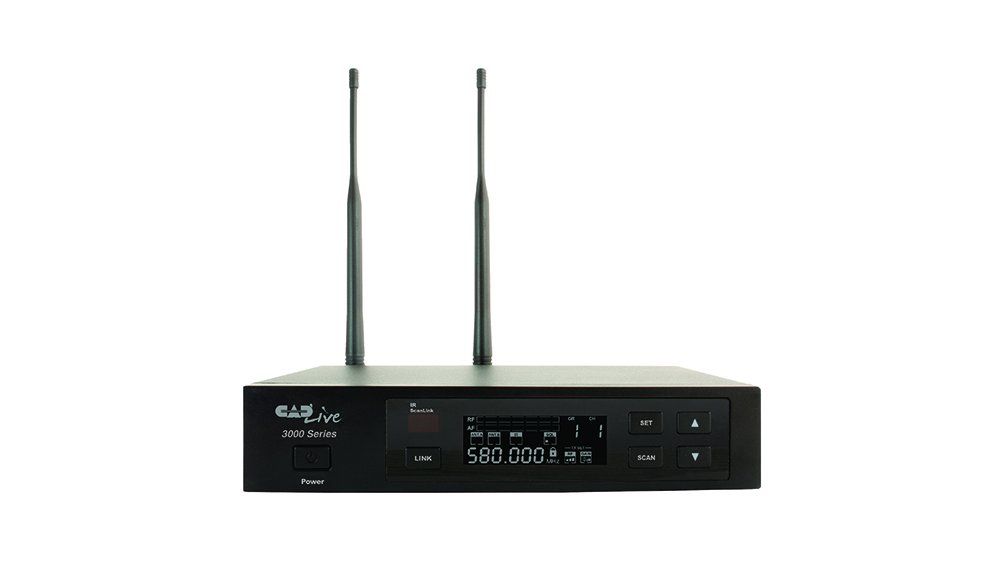
The CAD Audio CADLive WX3000 series features true diversity operation to minimize multipath interference, along with CADLock Automatic Tone Encoded Squelch to eliminate unauthorized transmissions in the signal path. Frequency agile design when partnered with ScanLink technology will scan, select, and link to the optimum channel allowing for an easy, flexible frequency plan. The CADLive handheld transmitter features metal construction and the CADLive D90 Supercardioid dynamic capsule that provides a powerful, smooth and highly articulate profile. The handheld and body pack transmitters also include SoftTouch multi-function on-off/mute switches. CADLive bodypack transmitters are equipped with CADTone circuitry ensuring accurate reproduction of Hi-z guitar and Lo-z mic inputs. CADLive wireless features 10, 30, 50mW transmitter power adjustment and dynamic range up to 110dB. Receivers and transmitters are equipped with a high definition LCD display and full RF, AF, battery life, mic sensitivity, and RF power metering.
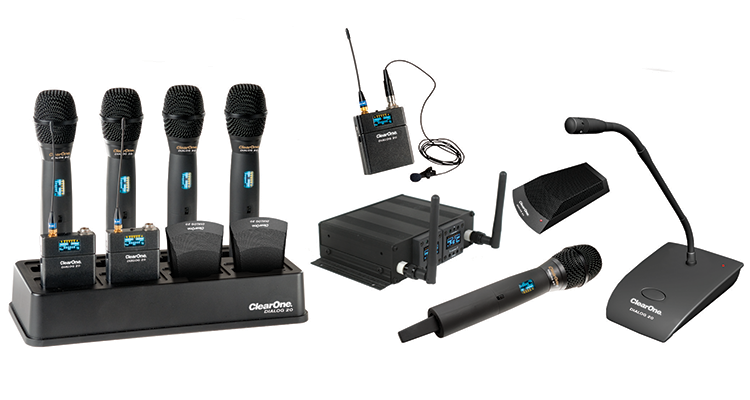
ClearOne’s DIALOG 20 wireless microphone system now features native compatibility with the ClearOne CONVERGE Pro 2 line of mixers. This new native integration feature utilizes ClearOne’s new P-Link (peripheral link), which allows for power over Ethernet, audio, and control connections with ClearOne’s CONVERGE Pro 2 DSP mixers. ClearOne’s P-Link gives integrators the ability to connect to ClearOne’s peripheral devices such as the Beamforming Mic Array 2, DIALOG 20 Wireless Mic Receiver, USB Expander, and GPIO Expander. The DIALOG 20 is a compact, two-channel professional digital wireless system with flexible powering and mounting options, plug and play installation and the ability to connect digitally to ClearOne CONVERGE Pro 2 DSP mixers. It also has standard audio and GPIO interfaces for any third-party audio mixer. It delivers full audio bandwidth through gooseneck, boundary, belt-pack or handheld transmitters and can connect to any type of audio conferencing or reinforcement system.

The Clockaudio CW 8000 is a UHF PLL personal wideband true diversity system that comprises one CW 8000T handheld radio microphone and one CW 8000R receiver. It features an operation distance of 200-480 meters and a maximum of 2,400-3,000 selectable frequencies across 60-75MHz. Its patented obstacles-free RF Remoset function synchronizes a transmitter simply by pushing a button. The CW 8000 also provides preset 12 groups each at maximum, and includes the user-programmable option of 6 groups each of 64 channels. Antenna boost power is provided for various external antenna installations.
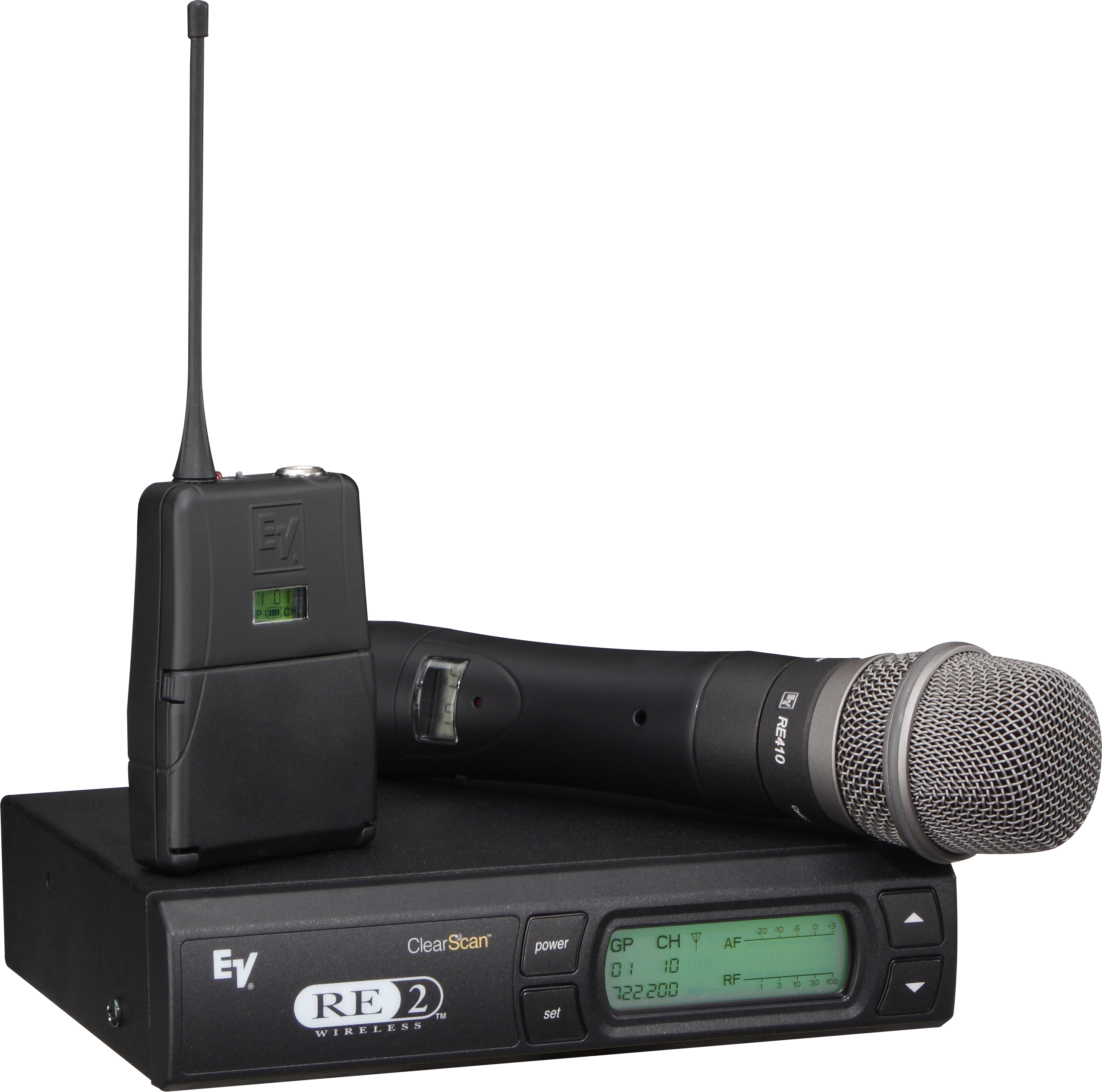
The RE-2 PRO Wireless System from Electro-Voice is a blend of pro-grade features and affordability, featuring one-touch AutoClearScan and full programmability, positioned in between E-V’s REV and RE-2 offerings. Other features include Posiphase diversity, over 28MHz operation, XLR mic/ line level output, backlit LCD display, and a unique “guitar-optimized” mode. The WTU-2 is a compact metal bodypack for the RE-2 system. Already compatible with the Telex RSB-2 mute switch for sports applications, the WTU-2 features selectable RF output power and rechargeable AA battery operation with optional BH-200 charger.
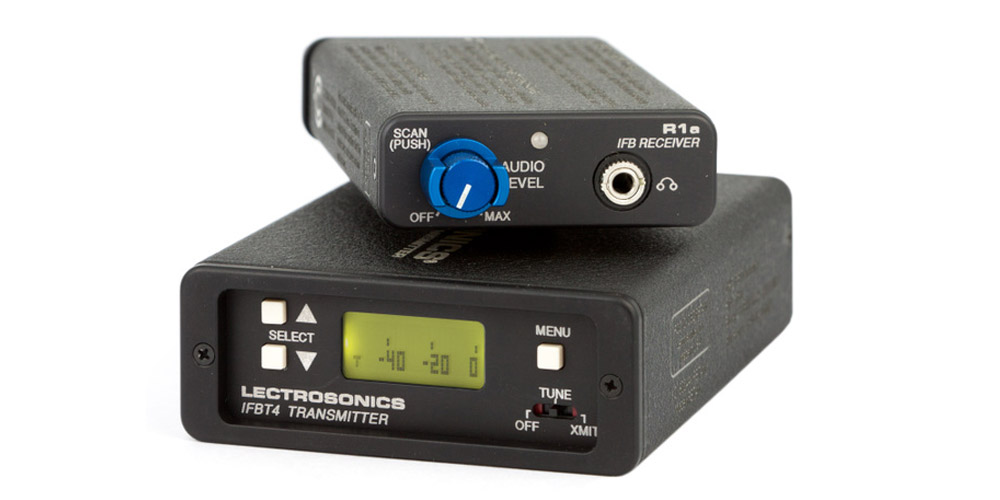
Lectrosonics’ version 4.0 firmware for its IFBR1a belt-pack receiver includes two distinct user interface modes: Scan Mode, exhibiting the original behavior of the IFBR1a receiver where users can locate and store up to five different IFB carrier frequencies by scanning for them; and Direct Entry Mode, which takes away the scan capability and replaces it with the ability to program channels into the memories directly via the pushbutton and hex switches. In Direct Entry Mode, five additional channel memories are available for a total of 10. IFBR1a users can identify the difference between a v4.0 IFBR1a in Scan Mode and a v2.4 IFBR1a by a burst of rapid LED blinks at power-on in the v4.0 version, indicating that the unit has two modes available; the first of those two modes is selected.

The Line 6 XD-V Wireless Microphone Series operates in the 2.4GHz ISM band, which is free from interference caused by TV broadcasts, white space devices, cell phone towers, and other transmitting devices. XD-V transmitters and receivers are designed to display essential system status quickly. Featuring clear visual displays, XD-V makes it simple to monitor battery levels and switch among up to 14 channels. Additionally, Relay G30, G50, G55 and XD-V35, XD-V55, and XD-V75 systems share the same technology, so it’s easy to combine handhelds, lavaliers, headsets and instruments within the same system, which also makes mixing and matching easy. XD-V75 systems include rack ears, antenna relocation accessories and rack-mounting hardware, making it easy to adapt to any professional installation. Multiple receivers interlock to create a compact multi-channel rack system. Finally, the built-in loop-through antenna distribution eliminates the need for additional external antenna units.
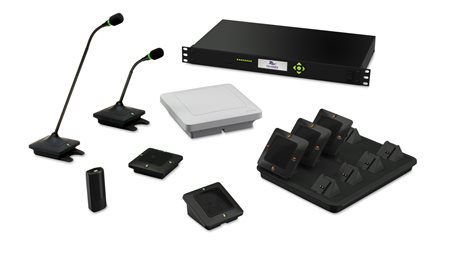
Revolabs’ Executive Elite wireless microphone system comes in 2-, 4-, or 8-channel models and may be used with any combination of 4-8 tabletop, wearable, and gooseneck microphones. It supports deployments requiring increased numbers of microphones, provides enhanced integration with room control systems, leverages a distributed architecture for straightforward, trouble-free installations, and facilitates remote management capabilities. Executive Elite separates the remote antenna receiver unit from base DSP unit, and the remote antenna receiver and base DSP units are connected via a standard Cat-5e or Cat-6 cable supporting PoE and simplifying distributed or in-room installations. When ceiling or wall mounted, the remote antenna receiver can be in the same room as the wireless microphones regardless of where the receiver base DSP unit is located.
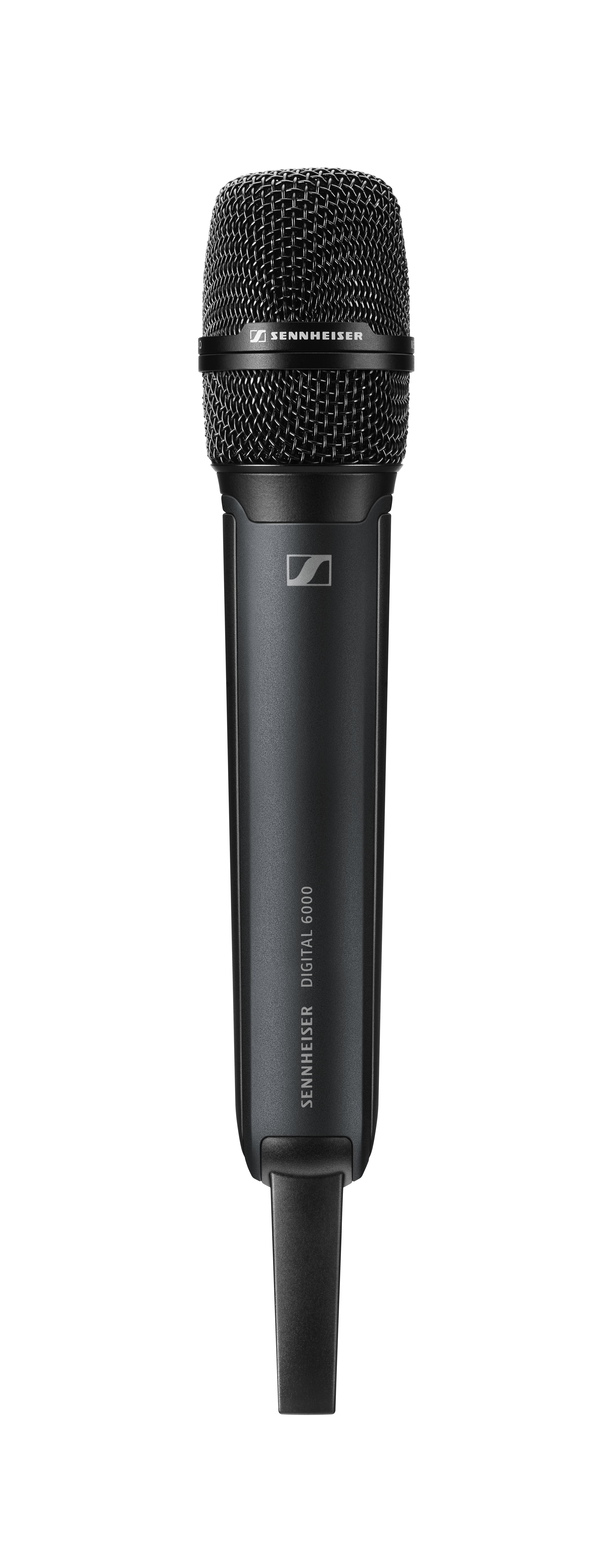
The Sennheiser Digital 6000 Series uses the same long-range mode and proprietary Sennheiser Digital Audio Codec as the Digital 9000, but comprises a two-channel receiver in two different versions, a bodypack and a handheld transmitter as well as a rack-mount 19in. charging unit. The digital two-channel receiver works across a switching bandwidth of 244 MHz (470 to 714 MHz), which is covered by three transmitter versions (470-558 MHz, 550-638 MHz, and 630-718 MHz). For larger systems, up to eight receiver units can simply be daisy-chained without the need for an additional antenna splitter; the multi-channel system will work with a single pair of antennas. Digital 6000 employs true bit diversity, transmission error correction, and additional intelligent error concealment. Additionally, the Digital 6000 receivers are fitted with a Link Quality Indicator, which ensures that issues get seen before any drop-outs occur. For data security, Digital 6000 features switchable AES 256 encryption.
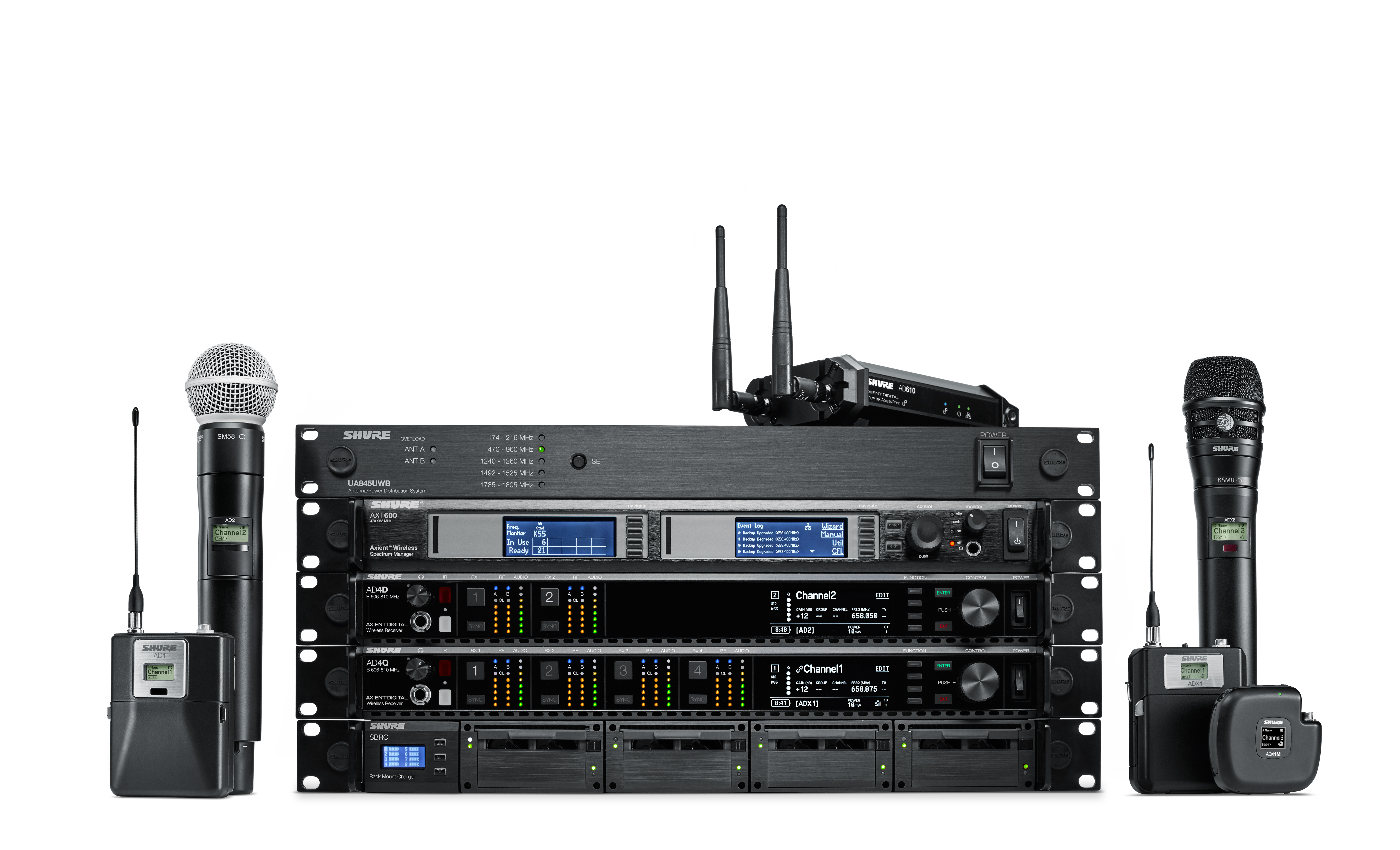
Shure’s Axient Digital provides high-performance RF, exceptional audio quality, command and control, and hardware scalability. Axient Digital features two receiver options (dual and quad) that are compatible with its two transmitter offerings, the AD Series and ADX Series. Axient Digital ADX Series transmitters additionally incorporate ShowLink, which provides real-time control of all transmitter parameters along with interference detection and avoidance. The ADX Series also includes a micro bodypack with an integrated self-tuning antenna, enabling greater concealment and comfort. Featuring transparent digital audio via Dante, AES67, and AES3, Axient Digital has a 20Hz to 20 kHz range with a flat frequency response and accurate transient response. Axient Digital also boasts wide dynamic range and 2ms latency from the mic transducer to the analog output.

Zaxcom’s ZMT3 Miniature Transmitter is just about as small as you will find in the industry. According to Zaxcom, a single 6MHz U.S. television channel can contain up to 60 channels of Zaxcom ZHD wireless when used with a QRX300 receiver spaced 100kHz. And thanks to the ZHD’s efficient modulation, it is capable of long transmission distance. The ZMT3 transmitters are available as 3.5 (518MHz to 614MHz) and 3.6 (596MHz to 698MHz). It’s housed in an impact resistant nylon polymer casing, and it runs cool—the combination of the nylon composite case and its power efficiency make the heat transfer nearly nonexistent. The ZMT3 works with ZaxNet, Zaxcom’s 2.4-GHz RF network that distributes remote control commands, timecode, and IFB audio. With ZaxNet, one can remotely control transmitter settings such as gain, frequency channel selection, transport controls, and output power levels.




